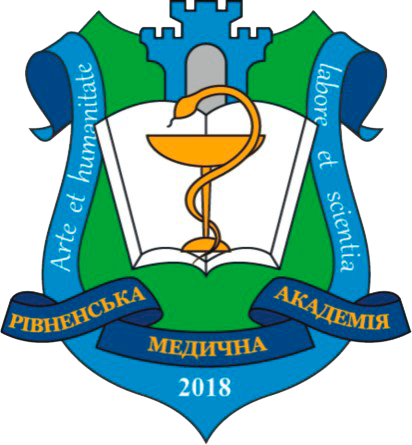DEVELOPMENT AND VALIDATION OF A SPECTROPHOTOMETRIC METHOD FOR DETERMINING THE RATE OF DOPAMINE OXIDATION IN A MODEL CHEMICAL SYSTEM
DOI:
https://doi.org/10.32782/health-2024.3.16Keywords:
Parkinson’s disease, dopamine, oxidation, validation, spectrophotometryAbstract
Parkinson’s disease is the second most common neurodegenerative disorder. This disease is caused by progressive damage to dopaminergic neurons in the brain, which leads to a decrease in the amount of dopamine, a neurotransmitter responsible for regulating motor functions. It is reported that dopamine is an unstable molecule and can undergo oxidation processes, which leads to a decrease in its level and, accordingly, the occurrence of motor disorders. In addition, the oxidation of this neurotransmitter produces a large number of reactive and toxic byproducts that damage neuronal cells. Given that dopamine oxidation plays a significant role in the development and progression of Parkinson’s disease, research aimed at studying the kinetic patterns of this process is promising. The aim of this work was to develop and validate a spectrophotometric technique for studying the kinetics of dopamine oxidation under controlled conditions in vitro. The proposed spectrophotometric method for determining the kinetics of dopamine oxidation in a model chemical system is based on measuring the increase in the optical absorption of dopamine oxidation products, mainly dopaminochrome, at a wavelength of 500 nm as a function of time. The developed method was validated by such validation parameters as specificity, linearity, precision, and robustness. According to the results of the validation procedure, it was confirmed that the wavelength of 500 nm is specific for the assay. The method has been proven to be linear, as the correlation coefficient in the dopamine concentration range of 80–120 % is 0.995. The accuracy of the method was confirmed at the level of convergence and reproducibility. It has been proven that changes in the test temperature and detector wavelength do not significantly affect the results of the method, which confirms its robustness. Thus, the developed spectrophotometric methodology allows obtaining correct and reproducible results for determining the kinetics of dopamine oxidation, since all selected validation characteristics meet the acceptance criteria. The developed methodology creates the basis for research on the effect of various active pharmaceutical ingredients on the process of dopamine oxidation, which will contribute to the development of new drugs for the treatment and prevention of Parkinson’s disease.
References
Chhetri J. K., Mei S., Wang C., Chan P. New horizons in Parkinson's disease in older populations. Age and ageing. 2023. № 52(10). afad186. https://doi.org/10.1093/ageing/afad186
Tolosa E., Garrido A., Scholz S. W., Poewe W. Challenges in the diagnosis of Parkinson's disease. The Lancet. Neurology. 2021. № 20(5). P. 385–397. https://doi.org/10.1016/S1474-4422(21)00030-2
Saramowicz K., Siwecka N., Galita G., Kucharska-Lusina A., Rozpędek-Kamińska W., Majsterek I. Alpha-Synuclein Contribution to Neuronal and Glial Damage in Parkinson's Disease. International journal of molecular sciences. 2023. № 25(1). P. 360. https://doi.org/10.3390/ijms25010360
Klein M. O., Battagello D. S., Cardoso A. R., Hauser D. N., Bittencourt J. C., Correa R. G. Dopamine: Functions, Signaling, and Association with Neurological Diseases. Cellular and molecular neurobiology. 2019. № 39(1). P. 31–59. https://doi.org/10.1007/s10571-018-0632-3
Zhou Z. D., Yi L. X., Wang D. Q., Lim T. M., Tan E. K. Role of dopamine in the pathophysiology of Parkinson's disease. Translational neurodegeneration. 2023. № 12(1). 44. https://doi.org/10.1186/s40035-023-00378-6
Dias V., Junn E., Mouradian M. M. The role of oxidative stress in Parkinson's disease. Journal of Parkinson's disease. 2013. № 3(4). P. 461–491. https://doi.org/10.3233/JPD-130230
Segura-Aguilar J., Paris I., Muñoz P., Ferrari E., Zecca L., Zucca F. A. Protective and toxic roles of dopamine in Parkinson's disease. Journal of neurochemistry. 2014. № 129(6). P. 898–915. https://doi.org/10.1111/jnc.12686
Pham A. N., Waite T. D. Cu(II)-catalyzed oxidation of dopamine in aqueous solutions: mechanism and kinetics. Journal of inorganic biochemistry. 2014. № 137. P. 74–84. https://doi.org/10.1016/j.jinorgbio.2014.03.018
Sun Y., Pham A. N., Hare D. J., Waite T. D. Kinetic Modeling of pH-Dependent Oxidation of Dopamine by Iron and Its Relevance to Parkinson’s Disease. Front Neurosci. 2018. № 12. P. 859. https://doi.org/10.3389/fnins.2018.00859
Florence T. M., Stauber J. L. Manganese catalysis of dopamine oxidation. The Science of the total environment. 1989. № 78. P. 233–240. https://doi.org/10.1016/0048-9697(89)90036-3
Klegeris A., Korkina L. G., Greenfield S. A. Autoxidation of dopamine: a comparison of luminescent and spectrophotometric detection in basic solutions. Free radical biology & medicine. 1995. № 18(2). P. 215–222. https://doi.org/10.1016/0891-5849(94)00141-6
Vila M. Neuromelanin, aging, and neuronal vulnerability in Parkinson’s disease. Movement disorders: official journal of the Movement Disorder Society. 2019. № 34(10). P. 1440–1451. https://doi.org/10.1002/mds.27776
Державне підприємство «Український науковий фармакопейний центр якості лікарських засобів». Валідація аналітичних методик і випробувань. Державна Фармакопея України. 2015. №. 2. P. 910-929.
European Medicines Agency. ICH Q2A: Validation of analytical methods: definition and terminology. London, Canary Wharf. 1995.
European Medicines Agency. ICH Q2B: Guideline on validation of analytical procedures: Methodology. London, Canary Wharf. 1997.





